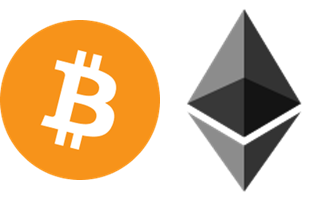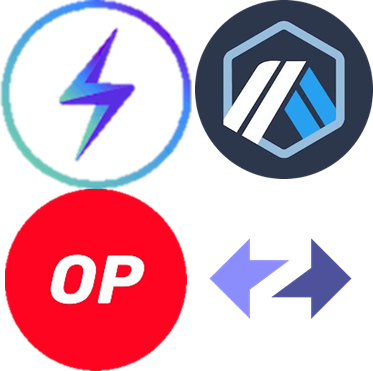【Blockchain Knowledge】Public Chain War | Layer 0 1 2

With each bull-bear cycle in the market, some old things will always be eliminated, and relatively new things will be born with the continuous development of the industry. The most exciting thing for me recently is that Ethereum announced its plan on 2022/9/19 The Merge upgrade took place that week, and then Ethereum-like tokens led the market for a small rally.
In addition to the Ethereum merger, perhaps those web3 VCs have not been able to find anything to invest recently. They seem to be watching some emerging L1 public chains such as Aptos, Sui, Linera, etc., and the news is constantly reporting who has received how much investment.
Regardless of the innovative designs of these new public chains, or to speculate on who has the best chance to win in the public chain battle, after thinking carefully about what we call Layer 1 and Layer 2, I suddenly want to return to the fundamentals and discuss The meaning and definition of the so-called L0, L1, and L2, I hope to learn more about the underlying content of the blockchain.
My own simple understanding will compare Layer 0 to a country, and Layer 1 to the cities or villages in the country. These areas are built on the country and share the same laws, culture, and language on this land. They operate independently, but some roads or bridges are connected to communicate with each other. Layer 2 and side chains will be like metropolitan areas attached to the city. When a city is overcrowded, everyone will want to find some Adjacent sites are built to expand the city, and if it is a smaller township, there will be less demand for Layer 2.
Layer 0

Around the end of June 2022, dYdX, the largest decentralized perpetual contract exchange on the Ethereum chain, announced that it would join the COSMOS ecosystem. The latest v4 version will use the Cosmos SDK to create its own blockchain. This news Let many start to delve into what made them leave Ethereum and choose Cosmos as a home for new developments.
Cosmos is one of the zero-layer protocols (Layer 0) of the blockchain, just as some decentralized financial applications (DApps) can be built on the Layer 1 or Layer 2 blockchains, Layer 0 allows in its architecture The blockchain is built on top of it. For example, the BNB Chain launched by Binance is built with the Cosmos SDK. The advantage of this is that it allows these blockchains built on top of it to operate independently of each other to have cross-chain operability, that is, It is said that different blockchains can communicate with each other, which is generally a feature that native Layer 1 blockchains lack.
In addition to the Layer 0 protocol that allows people to quickly build their own blockchains and communicate between blockchains, there are already a lot of data verification, cryptocurrency wrapping (Wrapping), cryptocurrency minting (Minting), etc. related applications.
The most famous Layer 0 protocols at present are probably Cosmos, Polkadot, and Avalanche, but as I mentioned earlier, these different Layer 0s are like independent countries, so they each have their own protocols and rules.
Although these protocols can be classified in Layer 0, their operation methods are still very different. If you plan to use the power of Layer 0 to develop your own blockchain in the future, you may need to spend more time on individual research and focus on your current situation. needs to choose the most suitable country to settle down in.
Layer 1

Layer 1 is the one that everyone is most familiar with. The first thing you come into contact with after entering the blockchain world, including the most well-known Bitcoin and Ethereum, both belong to the category of L1.
In addition to Bitcoin and Ethereum, blockchains like Solana, Near to the recently launched Aptos, Sui, etc. belong to Layer 1.
Their most important job is to generate blocks, which will record the untamperable ledger in the blockchain world, so that everyone can check who has how much money is left at any time, as well as what coins he bought and which NFTs he held, etc. and other applications.
To generate a block involves how, by whom, and how to verify whether the block is correct, so the consensus mechanism plays a very important role here. These consensus mechanisms are like the signature of the blockchain, if you think that this kind of consensus If you really want to join, you will become part of the community, which is why you hear some people call it "faith".
At present, the most mainstream consensus mechanisms are Proof of Work (PoW) and Proof of Stake (PoS), or some derived mechanisms such as DPoS and PoH.
With the rise of environmental protection issues such as global warming and climate change, I think most blockchains will hope to convert their consensus mechanism from traditional mining machines that use computing power to generate blocks to other energy-consuming ones. A lower consensus mechanism, and blockchains that stay and continue to use PoW will gradually switch to green energy mining. These development prospects are very good.
Layer 2

With the development and growth of the Layer 1 native blockchain, its users are increasing, but the number of transactions that can be processed per second on average has not evolved. It becomes quite difficult to trade or publish your own smart contract code, and you have to pay higher fees to complete a transaction quickly.
People gradually found that the blockchain is "expensive and difficult to use". The fundamental problem is that the block generation speed is too slow. However, to improve the speed, it may be necessary to sacrifice the degree of security or decentralization. This is also known as the The Impossible Triangle of Blockchain.
The emergence of Layer 2 stems from the desire to improve the efficiency of blockchain use without sacrificing security and decentralization. The first Layer 2 is Bitcoin's Lightning Network.
The Layer 2 ecosystem on Ethereum has only been developing in recent years, and the current mainstream technologies are Optimistic-Rollup s and Zk-Rollup (Zero knowledge).
Its operating principle is to convert part of the transaction data to the off-chain, or try to compress the transaction to ensure that the transaction data of Layer 1 is the smallest, and Layer 2 is responsible for recording more detailed content.
Since Layer 2 only assists Layer 1 with some detailed data processing, the data still needs to be sent back to Layer 1 for final asset allocation and adjudication. The security of Layer 2 is basically the same as that of Layer 1.
The advantage of this is that it can increase the speed of transactions per second and reduce transaction costs, but at the same time, it can maintain sufficient security to prevent the blockchain from being attacked.
Since I used some of Layer 2's services a little while ago, I'll write more in-depth content about Layer 2 when I have the chance.
Layer 3, Layer 4, Layer 5,… Layer N ?
Many people will continue to list some DeFi, Dapp or wallet applications and other services to Layer 3 and Layer 4, but unlike the number of layers in the Internet that is officially defined, the current stage for blockchain There is still no very standard definition of layers, so to me, these decentralized application scenarios and applications such as wallets and blockchain browsers are considered application layers. How many layers are subdivided? There is no need.
Another idea is that the layers of the blockchain are like layers on top of each other, but a DeFi protocol can be built on the Ethereum of Layer 1, or it can open a store on Layer 2 at the same time.
For example, the blockchains currently supported by Uniswap are: Ethereum, Polygon, Arbitrum, Optimism and Celo, so applications built on Layer 2 can be classified as Layer 3, but applications on Layer 1, if there is no good Is it possible that the definition of , can also be classified into Layer 2? Thinking about it makes me feel weird.
Finally, thank you for taking the time out of your busy schedule to read my articles. If you still like these content, I hope to get your follow-up and small sponsorship support, which will give me more motivation to continue writing. EVM compatible wallet The address is 0xae1dd06d57f582999a9c50b86ba913eecd7155ce.
Also welcome to join the Line community or Telegram group to discuss related topics
See you next time o((>ω< ))o~
Original link ITechNote technology essay
Like my work? Don't forget to support and clap, let me know that you are with me on the road of creation. Keep this enthusiasm together!


- Author
- More